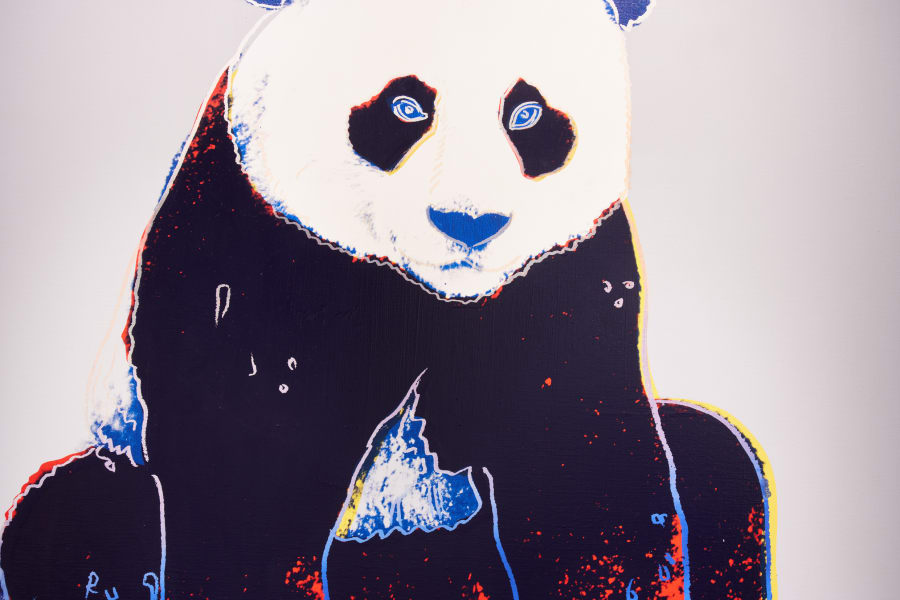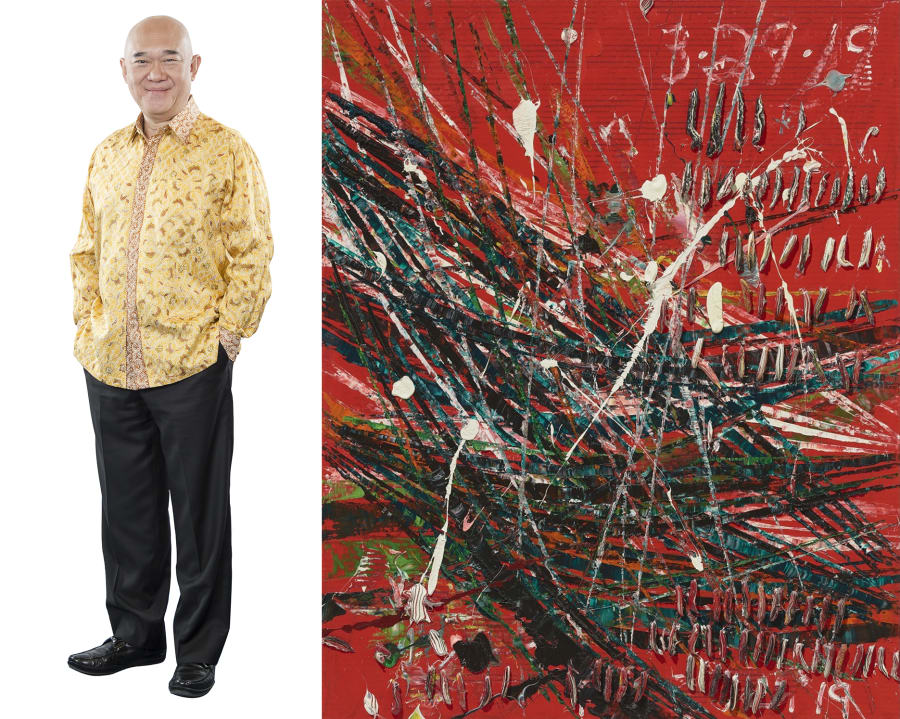Collectors have long played a pivotal role in shaping the cultural infrastructure of the Greater China region, where an array of collections are fueled by a range of motivations that offer insights into how collecting practices are evolving here.
Among the region’s leading patrons is Swiss businessman and diplomat Uli Sigg, who is known for amassing the world’s largest collection of Chinese contemporary art, spanning works from 1972 to 2012. While many collectors follow the traditional model in which their donation contributes to a public institution’s existing collection, Sigg went one step further. In 2012, his donation of 1,463 works to M+ museum in Hong Kong, formed the basis of the M+ collection at a time when the museum was still finding its feet, bolstering its position as a world-class institution in the process.
‘Other donors would never be able to match the vastness of Sigg’s collection and his holistic perspective,’ says M+ curator Isabella Tam. ‘He built the collection in an encyclopedic way that wasn’t driven by personal taste but captured every single moment of Chinese contemporary art history.’ While Sigg was originally driven by intellectual curiosity to understand Chinese culture through art, he soon started collecting systematically because no one else was doing so at the time. In the process, Sigg archived a cultural history that he has since entrusted to M+ along with the Sigg Prize, formerly the Chinese Contemporary Art Award, which he launched in 1998.
Leo Shih, a hardware inventor and businessman based in Taichung, Taiwan’s third largest city, has likewise taken on the role of archivist by adopting a scholarly approach to his collecting practice. While he also collects contemporary names, which he displays in his family home and in a private gallery, Shih’s collection focuses on a specific chapter in art history, when a wave of Chinese oil painters such as Sanyu, Xu Beihong, Lin Fengmian, and Yan Wenliang went to Europe on work-study programs in the 1920s. Because several works from this era were lost or destroyed during the Cultural Revolution, Shih’s collection constitutes an act of cultural preservation. He believes that collectors are like custodians who ‘protect artworks and await the moment to pass them on to the next collector, who can preserve an artist’s legacy.’
Shih relied on his own research as well as interactions with fellow enthusiasts and collectors to assemble his collection, which numbers more than 2,000 works that he often loans to institutions around the world. ‘In the early 2000s there were no advisors or so-called art consultants with knowledge of first-generation Chinese artists,’ he says.
Hong Kong financier Evan Chow – whose collection includes works by artists such as Donald Judd, Mika Tajima, and Chris Huen Sin Kan – describes his experience working with art advisors as a steep learning curve. ‘Building a collection is personal and I have learnt my lessons the hard way during the earliest days of my collecting journey,’ explains Chow, noting that he only occasionally works with a few advisors he trusts. ‘I have now formed my own in-house team to strategically plan, research, and continuously refine the scope of acquisition.’
Dedicated to bridging Hong Kong’s local art scene with the international art world by loaning works from his collection to museums and galleries worldwide, Chow is among a growing number of patrons in Hong Kong who believe in giving back to the community. (Hong Kong boasts the world’s highest share of collectors who identify as patrons, according to the 2022 edition of The Art Basel and UBS Global Art Market Report.) ‘Through sponsoring residencies, facilitating exhibitions, and engaging in various means, patronage plays a key role in prolonging and enriching an artist’s career, and more so, to the continual development and diversification of arts and culture’, Chow notes.
Chow is the first Hong Kong-based trustee to be appointed to the Board of Trustees at the New Museum of Contemporary Art in New York City, where he has supported exhibitions for several Asian artists including Wong Ping and Mire Lee. He also serves on the board of governors at the Hong Kong Arts Centre, and is part of the founding patrons group at M+. ‘After serving on the boards of several art institutions, I have come to realize the importance of art as a storytelling vehicle for future generations,’ he says. ‘I aim to build a collection that can reflect the zeitgeist of our time.’
Chinese collector Lu Xun shares a similar perspective. Part of a group of collectors in China who are creating a dialogue with the public and cultivating a broader appreciation of art, Lu describes the Sifang Art Museum – which he founded in 2013 with his father – as an institution that is dedicated to ‘unique and era-defining contemporary practices’ from China and around the world. In mainland China, where there is a dearth of state museums dedicated to contemporary art, institutions such as the Sifang Art Museum play a critical role. ‘Contemporary art has always been the “rogue” art form outside of the main ideological art landscape in China, so none of the many public museums have the flexibility or confidence to show it,’ says Lu. ‘Institutional presentation of contemporary art falls into the responsibility of private museums, and a few art university-affiliated museums.’
Spanning 30,000 ft2, the Sifang Art Museum is a striking Steven Holl-designed building which sits inside Sifang Parkland, a contemporary art and architecture complex in the Laoshan National Forest Park outside Nanjing. His father, real estate developer Lu Jun, was originally offered the 115-acre site to develop luxury housing, which he rejected. Wanting to contribute to China’s architectural landscape, he instead invited Chinese architects including Pritzker Prize-winner Wang Shu and renowned international architects, such as David Adjaye, to design 20 buildings including a hotel, sculpture park, and villas for artist residencies. ‘Unlike staging then dismounting an art exhibition, good buildings stay forever, and are consistently reinterpreted with the changing context,’ says Lu.
Beyond simply establishing a museum to display his own collection, Lu is deeply invested in enriching China’s contemporary art by nurturing artists and audiences alike. The museum offers a vital platform for emerging and mid-career Chinese artists by commissioning site-specific works and hosting artist residencies, while also mounting solo and group exhibitions featuring international names from Lu’s collection. About 5 years ago, Lu opened an experimental satellite space in a 1929 Modernist apartment building in Shanghai. ‘Some of Sifang’s best shows are done here,’ he says. Notable solo shows in the space have featured artists such as Xie Fan, Du Jingze, and Zhang Ruyi.
Among the region’s more recent ventures is M Art Foundation, which was founded in Shanghai in 2021 by two Chinese collectors who prefer to remain anonymous. ‘Establishing the foundation was an organic process,’ says the foundation’s director Zong Han, who explains how the institution’s founders became close to the artists they supported during the pandemic, and wanted to help others realize their projects too. ‘There are so many foundations in China dedicated to showcasing private collections, but our purpose isn’t acquiring physical pieces to display but rather to support different artistic practices.’
Adopting a new methodology, Zong describes M Art Foundation as ‘a non-collecting entity,’ whose goal is to foster creativity among Chinese and Chinese-diaspora artists. ‘In Europe, many artists have government support and private funding to pursue experimental projects, but in this region that isn’t the case.’ The foundation runs an ‘Annual Artist Project’ offering 50% to 60% of the funding an artist requires for certain projects. Previous recipients include He Xiangyu and Zhou Tao. Currently, it is also funding a 6-month residency program in Cambodia for Chinese artist Yu Ji. Responding to a lack of support in Asia, the foundation also funds knowledge production by commissioning research essays. It is currently setting up a base in Singapore; a move that has prompted the foundation to broaden their remit to support Southeast Asian artists. Most recently, it funded the production of new work by Singaporean artist Heman Chong, which will be shown in October at UCCA Dune in Qinhuangdao, China, before travelling to the UK and Singapore.
M Art Foundation’s expansion marks yet another step in a rapidly evolving field where collectors continue to drive positive change across the Greater China region with an eye towards the future, by forging critical dialogues at home and abroad.


